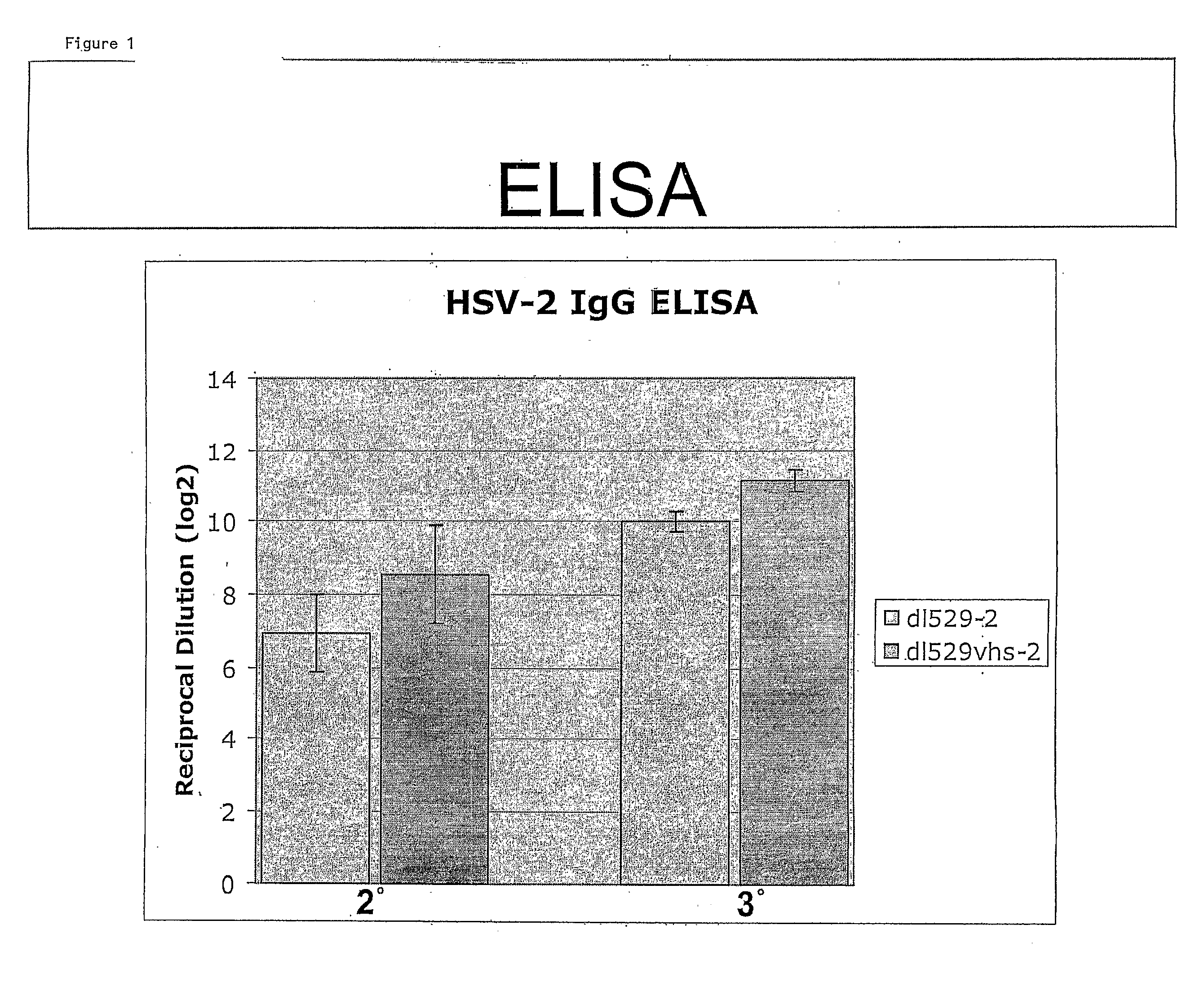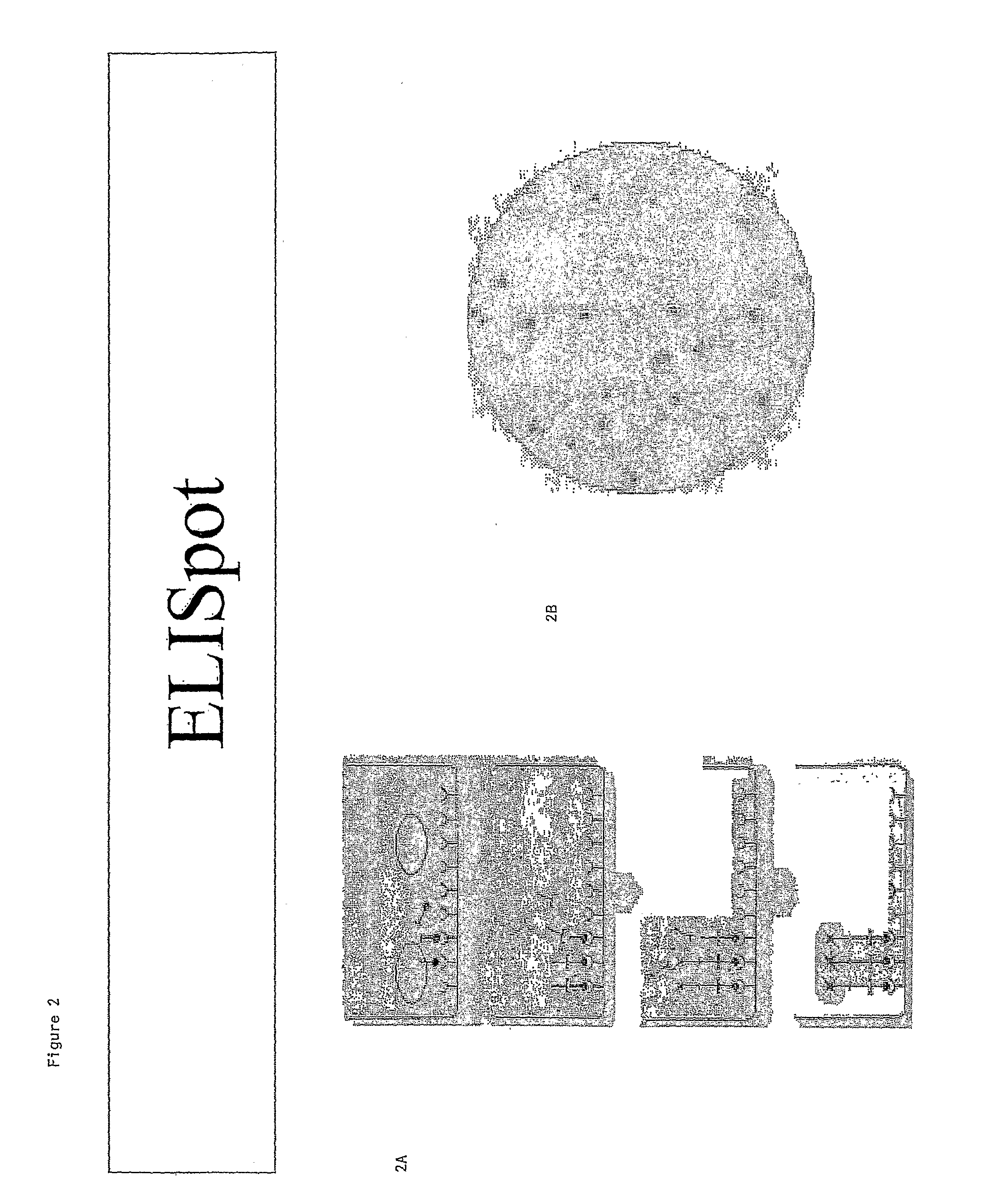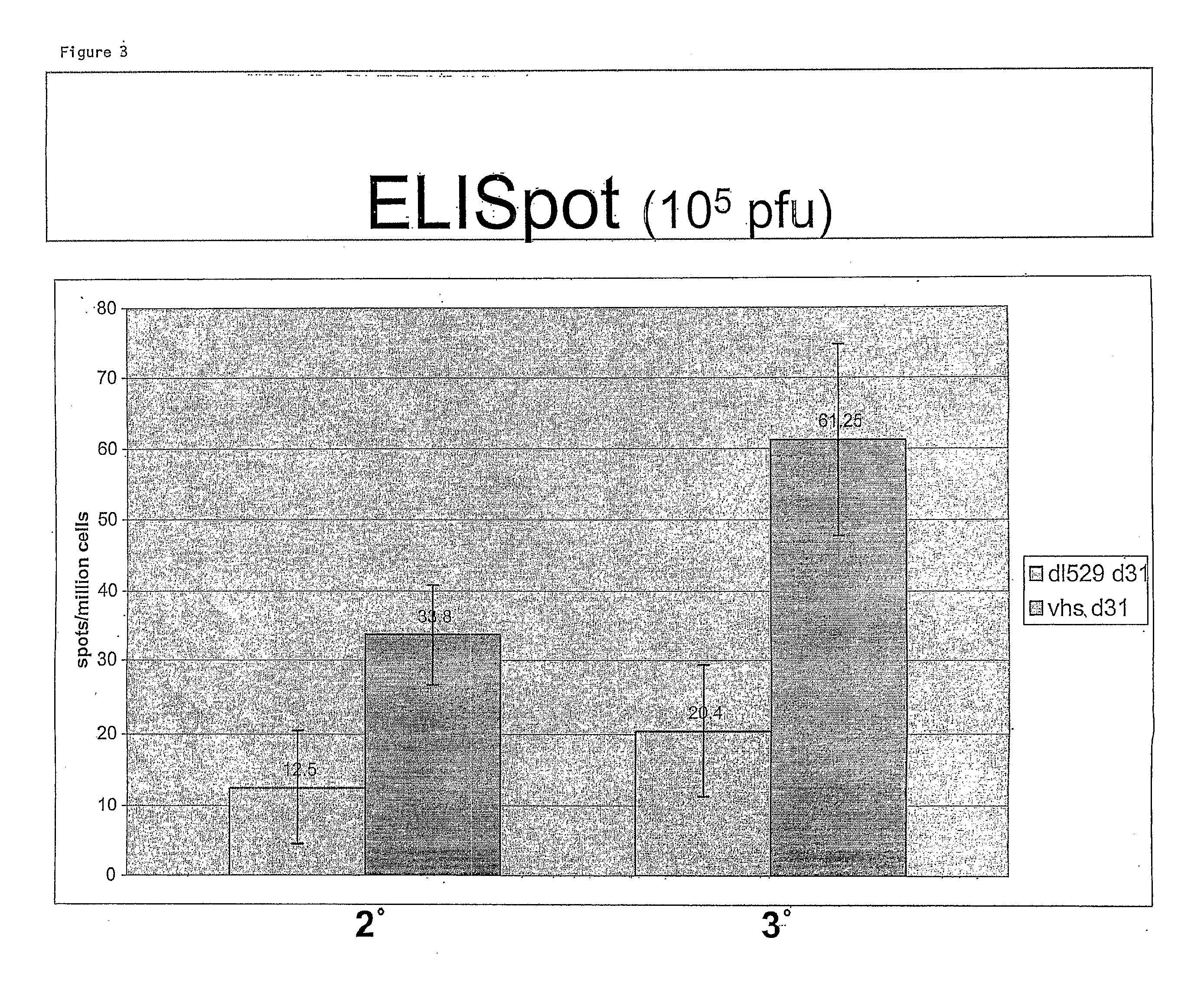Herpes simplex virus mutant and uses therefore
a technology of herpes simplex and mutant, which is applied in the field of herpes simplex virus mutant, can solve the problems of reducing immune function, reducing viral shedding, and long-term latent infections, so as to reduce the number or frequency of herpes outbreaks, improve immune function, and reduce viral shedding
- Summary
- Abstract
- Description
- Claims
- Application Information
AI Technical Summary
Benefits of technology
Problems solved by technology
Method used
Image
Examples
example 1
dl5-29 Immunization Induces Protection Against a Virulent HSV-2 Isolate
[0085]To determine if dl5-29 can induce protection against a primary clinical isolate from Sub-Saharan Africa, a highly virulent South African HSV-2 genital isolate, SD90, was identified. Mice were immunized twice with dl5-29 and then challenged intravaginally with 50 times the LD50 of either the SD-90 isolate or the SD90-3P purified clone. dl5-29 was able to elicit protection with 100% survival against this high dose of either the virulent HSV-2 isolate or the clone from Sub-Saharan Africa.
example 2
Disruption of the UL41 Gene Enhances the Humoral Immune Response
[0086]The HSV-2 UL41 gene encodes the virion host shut-off (VHS) polypeptide. VHS enhances herpes virulence and pathogenicity by inhibiting a number of host biological functions that are required to generate a robust host immune responses. VHS causes the nonspecific degradation of host and viral mRNA during early stage herpes infections. In addition, VHS is a potent inhibitor of the IFN-mediated anti-viral response and is responsible for HSV-mediated blocking of dendritic cell activation.
[0087]Deletion of the UL41 virion host shut-off (vhs) gene has been shown to increase the immunogenicity of HSV-1 replication defective viruses (Geiss, B., et. al. J. Virol. 74, 11137). To evaluate the effect of this gene on the immunogenicity of HSV-2 replication defective viruses, a LacZ insertion into UL41 was generated in the dl5-29 HSV-2 virus. The HSV-2 virus containing the triple mutant was designated dl5-29-41LacZ. The ability o...
example 3
Deletion of the UL41 Gene Enhances the Cellular Immune Response
[0089]The cellular immune response of C57 Bl / 6 mice was evaluated using an enzyme-linked immunospot assay (ELISpot), which provides for the high resolution frequency analysis of IFN-γ-secreting cells and the visualization of secretory products of individual cells. FIG. 2A is a schematic diagram illustrating the ELISpot assay. As shown in FIGS. 2A and 2B, isolated splenocytes are plated onto ELISpot plates, which have IFN-gamma specific antibodies fixed to their surface. The cells are then treated with an HSV gB peptide (SSIEFARL). This peptide specifically binds an MHC-1 molecule that is expressed on cd8(+) T cells. Only splenocytes that recognize this peptide secrete IFN-gamma. The secreted IFN-gamma binds an anti-IFN-gamma antibody that is fixed to the surface of the plate. The IFN-antibody is recognized by an avidin-coupled anti-mouse secondary antibody, which is visualized with streptavidin horseradish peroxidase. FI...
PUM
| Property | Measurement | Unit |
|---|---|---|
| temperature | aaaaa | aaaaa |
| pH | aaaaa | aaaaa |
| optical density | aaaaa | aaaaa |
Abstract
Description
Claims
Application Information
 Login to View More
Login to View More - R&D
- Intellectual Property
- Life Sciences
- Materials
- Tech Scout
- Unparalleled Data Quality
- Higher Quality Content
- 60% Fewer Hallucinations
Browse by: Latest US Patents, China's latest patents, Technical Efficacy Thesaurus, Application Domain, Technology Topic, Popular Technical Reports.
© 2025 PatSnap. All rights reserved.Legal|Privacy policy|Modern Slavery Act Transparency Statement|Sitemap|About US| Contact US: help@patsnap.com



